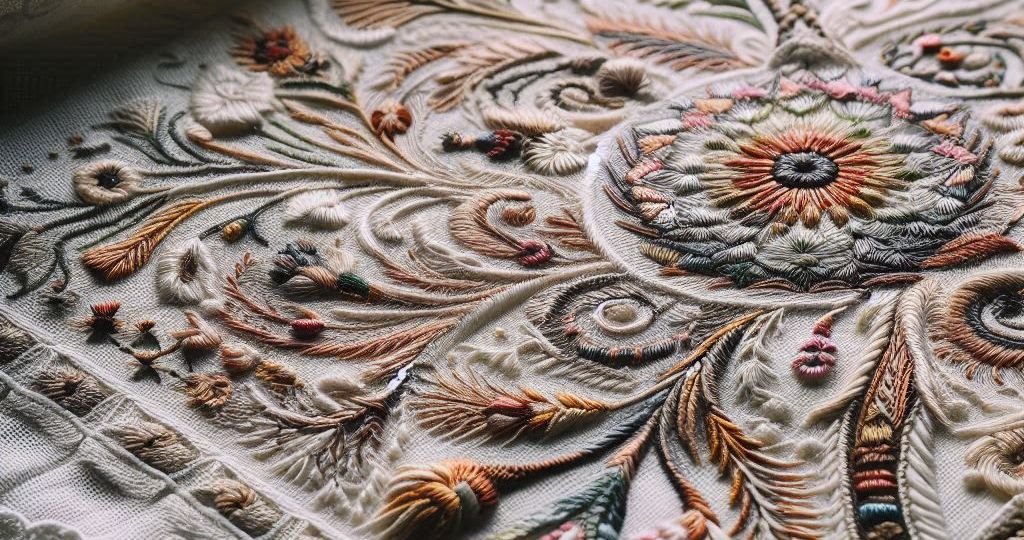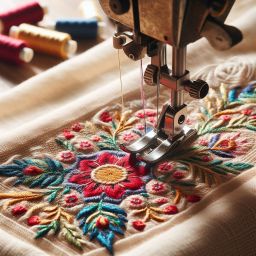

Embroidery is a timeless art form that has been used for centuries to add beauty, personality, and distinction to textiles.
In recent years, it has also emerged as a powerful tool for businesses looking to enhance their branding, marketing, and overall image.
In this article, we’ll explore it’s impact on businesses and how it can help elevate their visibility, professionalism, and customer engagement.
What is Embroidery?
Here’s a breakdown of what it is:
- Materials: It typically uses a needle, thread (or yarn), and fabric. You can also incorporate other materials like beads, sequins, or even feathers for added texture and dimension.
- Techniques: There are many different embroidery stitches, each creating a unique effect. Some basic stitches include the running stitch, satin stitch, and cross-stitch. More complex stitches can build upon these basics.
- Applications: It is used for a variety of purposes. It can be purely decorative, adding beauty to clothing, linens, tapestries, and even hats. It can also be functional, reinforcing seams or creating personalized items like embroidered patches or monograms.
The Impact of Embroidery
- Branding and Identity: It allows businesses to create custom designs, logos, and artwork that reflect their brand identity and values. Whether it’s adding a company logo to uniforms, hats, or bags, it helps businesses stand out and make a memorable impression on customers.
- Professionalism and Credibility: Embroidered apparel and merchandise convey a sense of professionalism and credibility, signaling to customers that a business cares about quality and attention to detail. Whether it’s embroidered uniforms for staff or branded merchandise for promotional purposes, it adds a touch of sophistication and polish to a business’s image.
- Durability and Longevity: Unlike other forms of customization such as screen printing or heat transfer, it offers durability and longevity. Embroidered designs withstand repeated washings and wear, ensuring that branded apparel and merchandise maintain their quality and appearance over time.
- Versatility and Customization: It offers endless possibilities for customization, allowing businesses to create unique and personalized designs tailored to their specific needs and preferences. Whether it’s adding individual names to uniforms or creating intricate designs for promotional products, it can bring any vision to life with precision and detail.
- Promotional Opportunities: Embroidered merchandise such as hats, bags, and jackets can serve as powerful promotional tools, helping businesses increase visibility and brand awareness. When customers wear or use embroidered merchandise in public, they become walking advertisements for the business, generating interest and attracting new customers.
- Customer Engagement and Loyalty: Offering embroidered merchandise as promotional giveaways or incentives can help businesses engage with customers and foster loyalty. Customers appreciate receiving high-quality, personalized items, and are more likely to remember and support businesses that go the extra mile to make them feel valued.
- Enhanced Product Packaging: It can also be used to enhance product packaging, adding a luxurious and personalized touch to gift boxes, bags, and other packaging materials. Embroidered logos or designs on packaging can elevate the perceived value of products and create a memorable unboxing experience for customers.
Types of Embroidery
There are several types of embroidery techniques, each with its own unique characteristics and applications. Here are some of the most common types:
- Hand Embroidery:

This technique allows for intricate and detailed designs, and it is often used for creating fine artwork, embellishing garments, and personalizing items.
2. Machine Embroidery:

Machine embroidery involves using computerized embroidery machines to stitch designs onto fabric.
This technique allows for faster production and more consistent results compared to hand embroidery.
It is widely used for creating logos, monograms, and decorative patterns on clothing, accessories, and home textiles.
3. Cross Stitch: Cross stitch is a popular embroidery technique where X-shaped stitches are used to create intricate designs on fabric. This technique is often used for creating decorative samplers, wall hangings, and framed artwork. Cross stitch patterns can range from simple geometric shapes to complex images and motifs.
4. Crewel Embroidery: It is a form of surface embroidery that uses wool yarn to create textured and dimensional designs on fabric. This technique is characterized by its bold and colorful designs, often featuring floral motifs, animals, and geometric patterns. It is commonly used for creating decorative pillows, curtains, and upholstery.
5. Counted Thread Embroidery: Counted thread embroidery is a technique where stitches are worked over a specific number of threads in the fabric, creating geometric patterns and motifs. This technique includes techniques such as blackwork, hardanger, and drawn thread embroidery. It is often used for creating delicate and intricate designs on linens, tablecloths, and clothing.
6. Sashiko Embroidery: Sashiko is a traditional Japanese embroidery technique that involves stitching repetitive patterns using a running stitch. This technique is often used for reinforcing and embellishing textiles, such as quilts, garments, and home decoration items. It is characterized by its geometric designs and strong, visible stitches.
7. Machine Appliqué: Machine appliqué is a technique where fabric shapes are stitched onto a base fabric to create designs or patterns. This technique allows for fast and precise appliqué work, and it is commonly used for creating decorative motifs, logos, and lettering on clothing, accessories, and quilts.
Conclusion
Embroidery offers businesses a powerful tool for enhancing their branding, professionalism, and customer engagement.
By leveraging the versatility, durability, and customization options of embroidery, businesses can elevate their image, increase visibility, and stand out in a competitive marketplace.
Whether it’s embroidered apparel for staff, promotional merchandise for customers, or customized packaging for products, it adds a touch of elegance and distinction that leaves a lasting impression on customers.


